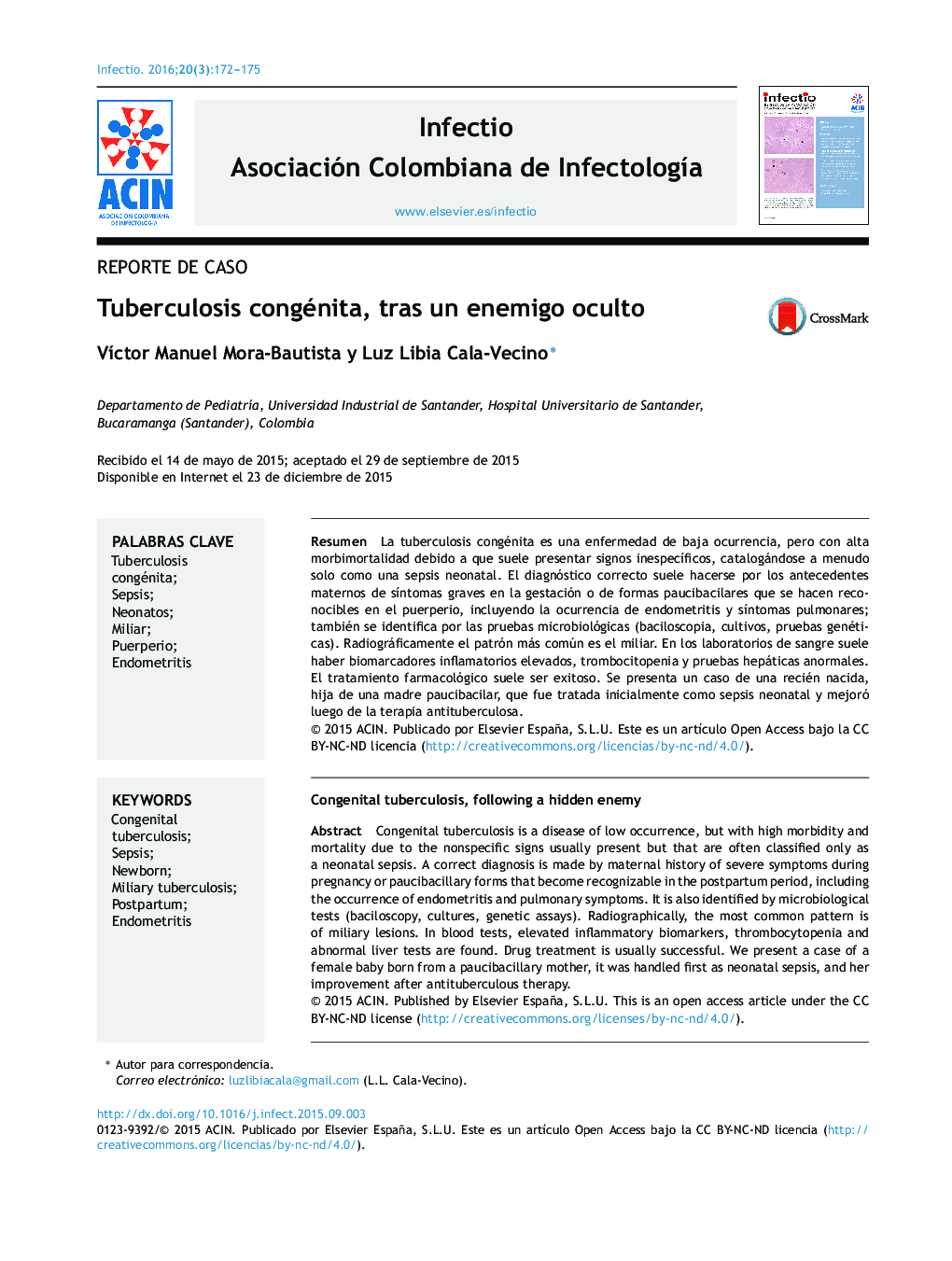| Article ID | Journal | Published Year | Pages | File Type |
|---|---|---|---|---|
| 3403625 | Infectio | 2016 | 4 Pages |
ResumenLa tuberculosis congénita es una enfermedad de baja ocurrencia, pero con alta morbimortalidad debido a que suele presentar signos inespecíficos, catalogándose a menudo solo como una sepsis neonatal. El diagnóstico correcto suele hacerse por los antecedentes maternos de síntomas graves en la gestación o de formas paucibacilares que se hacen reconocibles en el puerperio, incluyendo la ocurrencia de endometritis y síntomas pulmonares; también se identifica por las pruebas microbiológicas (baciloscopia, cultivos, pruebas genéticas). Radiográficamente el patrón más común es el miliar. En los laboratorios de sangre suele haber biomarcadores inflamatorios elevados, trombocitopenia y pruebas hepáticas anormales. El tratamiento farmacológico suele ser exitoso. Se presenta un caso de una recién nacida, hija de una madre paucibacilar, que fue tratada inicialmente como sepsis neonatal y mejoró luego de la terapia antituberculosa.
Congenital tuberculosis is a disease of low occurrence, but with high morbidity and mortality due to the nonspecific signs usually present but that are often classified only as a neonatal sepsis. A correct diagnosis is made by maternal history of severe symptoms during pregnancy or paucibacillary forms that become recognizable in the postpartum period, including the occurrence of endometritis and pulmonary symptoms. It is also identified by microbiological tests (baciloscopy, cultures, genetic assays). Radiographically, the most common pattern is of miliary lesions. In blood tests, elevated inflammatory biomarkers, thrombocytopenia and abnormal liver tests are found. Drug treatment is usually successful. We present a case of a female baby born from a paucibacillary mother, it was handled first as neonatal sepsis, and her improvement after antituberculous therapy.
